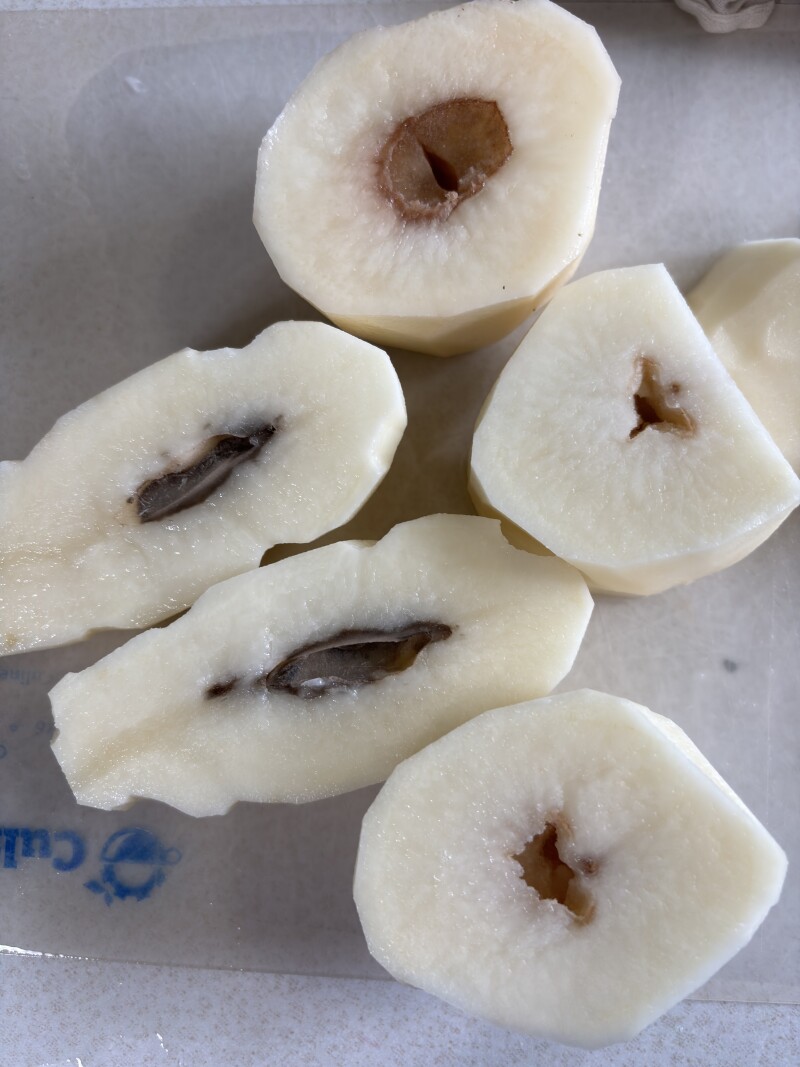Gardening enthusiasts may face challenges even when using certified seed potatoes, as highlighted by a recent inquiry from Carin N., whose sister-in-law encountered unexpected issues with her white potatoes this summer. While the plants appeared healthy and were largely pest-free, the harvested potatoes revealed significant internal rot, a phenomenon known as hollow heart disorder.
Understanding Hollow Heart Disorder
Hollow heart, a physiological disorder rather than a communicable disease, causes internal gaps to form in potato tubers. This condition is common in various potato varieties, especially white and russet types, and is often exacerbated in larger tubers. The disorder is not new; it has likely existed as long as potatoes themselves.
According to experts, including those from North Dakota State University, hollow heart is primarily triggered by environmental factors. Rapid growth caused by sudden changes in moisture levels—such as heavy rainfall following a dry spell—can lead to this disorder. Additionally, fluctuating soil temperatures have been associated with the onset of hollow heart.
Gardeners may wonder how to mitigate the risk of hollow heart in their crops. Maintaining consistent soil moisture, particularly from mid-summer onwards, is crucial. Mulching can be an effective strategy to regulate moisture levels in the soil. While potatoes affected by hollow heart are safe to eat, it is advisable to remove any discolored sections before consumption. However, it’s worth noting that hollow heart can reduce the storage life of potatoes, making them more susceptible to secondary rots.
Protecting Other Garden Plants
In another gardening inquiry, Sam M. asked about protecting apple tree trunks during winter. As the white tree tubes no longer fit around the trunks, the question arose whether cardboard wrapping could suffice. Protecting tree trunks is essential for ensuring their long-term health, as winter sunscald can invite fungal infections like black rot, potentially shortening a tree’s lifespan significantly.
To prevent sunscald, gardeners are encouraged to shield tree trunks from bright winter sunlight, particularly from reflective snow. Creative solutions include using materials like burlap or flexible cardboard. Some commercial growers even utilize diluted indoor water-based white paint to reflect sunlight. Another popular option is a tree wrap available at garden centers, which can be easily applied around the trunk.
Preparing Lawns for Winter
With the approach of winter, lawn care is also on the minds of many gardeners. John S. inquired about lowering the mowing height of his lawn. Reducing the height before winter can help prevent snow mold and reduce habitats for voles, which thrive under snowy conditions. However, experts recommend delaying this until several hard freezes have occurred, signaling the lawn’s transition into dormancy.
The ideal final mowing height is around 2 inches. Interestingly, some gardeners have been known to mow as late as December 3, just to say they mowed in December.
For those with gardening questions, Don Kinzler of the NDSU Extension-Cass County encourages inquiries. Questions with broad appeal may be published, so including name, city, and state helps ensure tailored advice.





































































